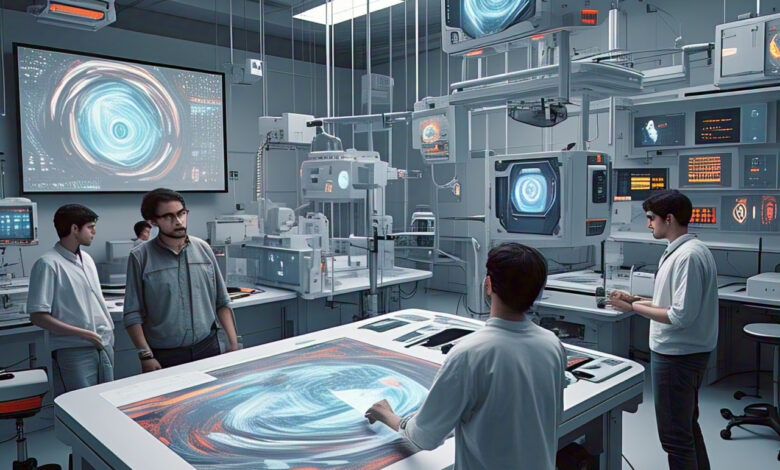AI Image Generators: Revolutionizing Visual Creativity

Artificial Intelligence (AI) image generators have emerged as transformative tools in the realms of art, design, and media. By leveraging advanced machine learning models, these systems can create stunning, realistic, or fantastical images from simple text prompts, democratizing creativity and opening new avenues for innovation. This article explores the technology behind AI image generators, their applications, benefits, challenges, and the ethical considerations they raise.
How AI Image Generators Work
AI image generator rely on sophisticated neural networks, primarily diffusion models, Generative Adversarial Networks (GANs), and transformer-based architectures. These models are trained on vast datasets of images and text, learning to map textual descriptions to visual outputs.
- Diffusion Models: Popularized by tools like DALL·E 3 and Stable Diffusion, diffusion models start with random noise and iteratively refine it into a coherent image based on a text prompt. They excel at producing high-quality, detailed visuals.
- Generative Adversarial Networks (GANs): GANs consist of two networks—a generator that creates images and a discriminator that evaluates them. Through competition, the generator improves its output, as seen in earlier AI art tools.
- Transformers: Borrowing from natural language processing, transformers like those in Midjourney help align text prompts with visual concepts, enabling nuanced and contextually accurate image generation.
Training datasets, often scraped from the internet, include millions of images paired with captions. This allows the AI to learn patterns, styles, and associations, such as recognizing that “a futuristic city” might feature neon lights and skyscrapers. The result is a system capable of generating images ranging from photorealistic portraits to surreal landscapes.
Applications of AI Image Generators
The versatility of AI image generators has led to their adoption across industries:
- Art and Design: Artists use tools like Midjourney and Stable Diffusion to create unique artworks, experiment with styles, or generate concept art for films and games. Designers leverage AI to produce mockups, logos, or marketing visuals quickly.
- Entertainment and Media: AI-generated images are used in video game development, movie pre-visualization, and virtual reality environments. They enable rapid prototyping of characters, environments, and special effects.
- Advertising and Marketing: Brands employ AI to create tailored visuals for campaigns, reducing costs and production time. Personalized ads, generated in seconds, resonate with specific audiences.
- Education and Research: AI images illustrate complex concepts, simulate historical scenes, or visualize scientific phenomena, enhancing learning and communication.
- E-commerce: Retailers generate product images, such as clothing on virtual models, without physical photoshoots, streamlining inventory updates.
Benefits of AI Image Generators
AI image generators offer significant advantages:
- Accessibility: Non-artists can create professional-grade visuals using simple text prompts, lowering the barrier to creative expression.
- Speed and Efficiency: Generating an image takes seconds, compared to hours or days for traditional methods, accelerating workflows.
- Cost-Effectiveness: Businesses save on hiring artists or photographers, making high-quality visuals affordable for startups and individuals.
- Customization: Users can fine-tune outputs by adjusting prompts, styles, or parameters, ensuring the result aligns with their vision.
- Inspiration: AI-generated images spark creativity, serving as starting points for artists or brainstorming tools for teams.
Challenges and Limitations
Despite their promise, AI image generators face technical and practical hurdles:
- Quality Inconsistencies: While advanced models produce stunning results, they can struggle with specific details, like human hands or text within images, leading to artifacts or distortions.
- Bias in Outputs: Training datasets reflect internet biases, resulting in stereotypical or skewed representations. For example, prompts for “CEO” might disproportionately generate images of men.
- Resource Intensity: Training and running these models require significant computational power, raising environmental concerns.
- Prompt Engineering: Crafting effective prompts can be an art form, requiring users to learn how to communicate with the AI to achieve desired results.
Ethical and Legal Considerations
AI image generators have sparked debates over ethics and legality:
- Copyright and Ownership: Many models are trained on copyrighted images, raising questions about whether generated images infringe on original artists’ rights. Lawsuits against companies like Stability AI highlight these concerns.
- Misuse Potential: AI can generate deepfakes, misinformation, or explicit content, necessitating robust safeguards and regulations.
- Impact on Artists: While AI empowers creativity, it also threatens traditional artists’ livelihoods, as businesses may opt for cheaper AI-generated visuals over human work.
- Cultural Sensitivity: Biased or insensitive outputs can perpetuate harmful stereotypes, requiring ongoing efforts to diversify training data.
The Future of AI Image Generators
The trajectory of AI image generators points to exciting developments. Improved models will likely produce even higher-quality images with fewer errors, while advances in multimodal AI could integrate image generation with video, audio, or 3D modeling. Efforts to address ethical concerns, such as using licensed datasets or developing transparent AI systems, will shape their evolution.
Moreover, open-source initiatives like Stable Diffusion foster community-driven innovation, enabling developers to create specialized tools. Integration with augmented reality (AR) and virtual reality (VR) could transform industries like gaming and education, offering immersive, AI-crafted worlds.
Conclusion
AI image generators are redefining how we create and interact with visuals. By blending technology with creativity, they empower individuals and businesses to bring ideas to life with unprecedented ease. However, their rise demands careful navigation of ethical, legal, and societal challenges. As these tools evolve, they promise to unlock new dimensions of human imagination, making the future of visual storytelling as vibrant as the images they produce.



